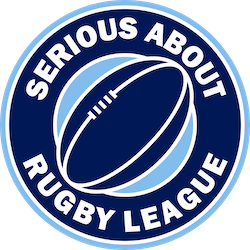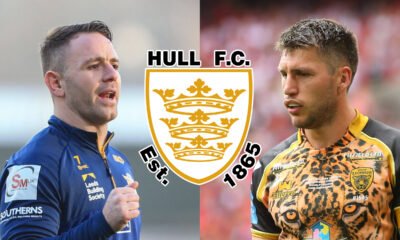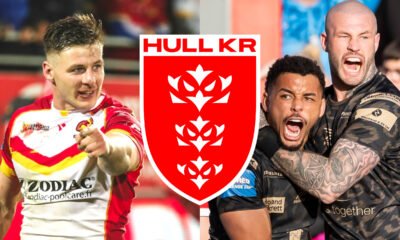
5. Jonathan Davies
Davies started in union and made his debut for Neath in 1982. Three years later ‘Jiffy’ made his debut for Wales and would go on to become arguably the greatest fly-half to pull on the famous red jersey. He helped his beloved home nation to the triple crown in 1988 before he was persuaded to switch codes and sign for Widnes a year later in a record deal. Davies was probably the highest profile player to join league from union since Dally Messenger nearly 80 years previous. In his first season he helped Widnes beat Canberra in the World Club Challenge and was soon in a Great Britain jersey. After a short spell with Canterbury in 1991, where he scored 100 points in only 14 games, the Welsh wizard transferred to local rivals Warrington in 1993 and was named Man of Steel a year later. He scored a famous try for the Lions in the 1994 Ashes before spending the remaining years of his career crossing between the codes, playing for Llanelli, Cardiff and the North Queensland Cowboys.
4. Brad Thorn
Thorn won the Rugby World Cup, NRL, Super Rugby, Heineken Cup and even State of Origin in a trophy-laden career in both codes. The New Zealand-born forward was rookie of the year at the Broncos in 1994 and made his debut for the Maroons in the 1996 Origin series. A year later Thorn made his Kangaroos debut and helped the Broncos win the NRL title in 1998. By the turn of the century he was a stalwart in the Maroons side but was tempted away by the financial power of the 15-a-side game. He joined Super Rugby outfit Crusaders in 2001 and decided to play for the All Blacks in the 15-man code. He is only the second player, after Bill Hardcastle, to play for Australia in league and New Zealand in union. After returning to Brisbane, Thorn again lifting the NRL title in 2006 before going back to union in 2007. He would spend the remainder of his career in the code and won the Rugby World Cup on home soil with the All Blacks in 2011.
3. Sonny Bill Williams
Now a global megastar, Sonny Bill was signed by Canterbury Bulldogs as a 17-year-old and won the 2004 NRL title in his first full season. He made his Kiwis debut at 18 and shocked the rugby world by switching codes to sign for Toulon in 2008. Two years later Williams’ transfer to Super Rugby outfit Canterbury pushed him into the All Blacks setup and by 2011 he was a Rugby World Cup winner. At this point he was a national hero and the biggest rugby star on the planet. He signed for the Chiefs, via the Crusaders, in 2012 and added the Super Rugby title to his growing list of trophies – becoming only the fourth player to win both the Super Rugby and NRL. He switched back to the league in 2013 and another NRL title followed as he was named the Sydney Roosters player of the year. A Rugby League World Cup title evaded him before going back to union and helping the All Blacks retain the World Cup in 2015. In what is expected to be his last career move, SBW returned to league ahead of the 2020 season and signed a mega-money deal with the Toronto Wolfpack.
2. Jason Robinson
Robinson was part of a dominant Wigan side in the 90’s, winning his first Challenge Cup as a 19-year-old in 1993. He played in the Warriors’ famous win over the Brisbane Broncos in the 1994 World Club Challenge and won the Harry Sunderland Trophy after a match-winning performance in the first Super League Grand Final in 1998. He represented both Great Britain and England 19 times before his desire to represent his country at both codes led to him signing for Sale in 2000. Robinson became a national hero when he scored a try in helping England win the Rugby World Cup in 2003 and two years later he would represent the British and Irish Lions for a second tour. The speedster made history in 2006 when he became the first player to win Super League and the Rugby Premiership as Sale stormed to the title. A year on he almost added another Rugby World Cup before ‘Billy Whizz’ called time on a quite remarkable cross-code career.
1. Dally Messenger
The Master started his career in rugby union in 1905 for Eastern Suburbs and soon became a fan’s favourite with his clever style of play. He was picked for the New South Wales team in 1907 and played twice for Australia against the All Blacks in the same year. Messenger decided to defect to the professional ranks of rugby league in 1908 and the switch didn’t go down well with the suits at union. It wasn’t until the 21st century that his records were restored in the books of the New South Wales Rugby Union such was the fallout from his exit. Dally played in a rebel series against the All Golds and toured England with the New Zealand professional side in 1908, a tour which was replicated in 2008 in Rugby League’s centenary year. Often viewed as a pioneer for the growth of rugby league, Messenger is still arguably the sport’s greatest ever player and was even offered contracts by top British football clubs whilst touring with the Kangaroos in 1908. His legacy lives on as the award for the top player in the NRL is named after him and he is undoubtedly the first true superstar of either code. He was named on the wing in the all-time New South Wales team in 2008 and is immortalised with a statue outside the Sydney Football Stadium. His record of 32 points in one game for New South Wales has only recently been matched during the 2011 season where he scored 270 points in only 21 games. The furore that surrounded his switch from union to league will never be repeated as he had the ability to fill stadiums on his own. Messenger is without doubt the greatest ever cross-code international.




























